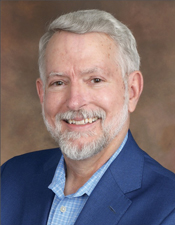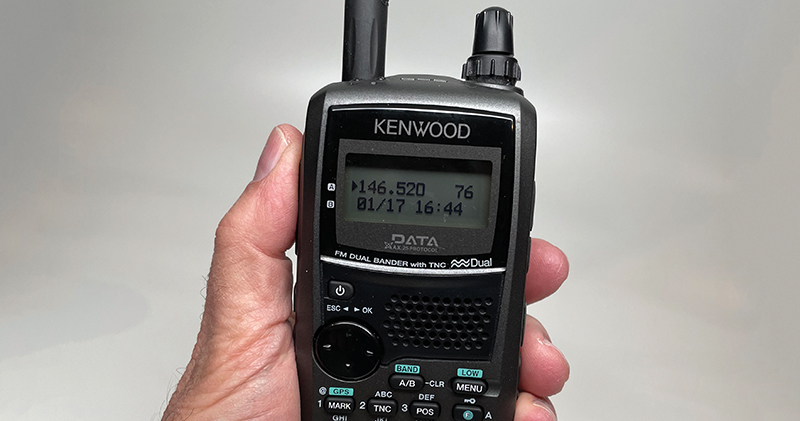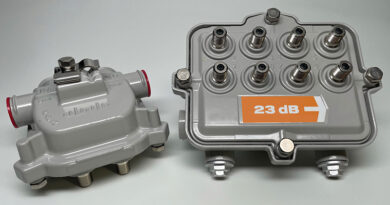Hammin’ it Up!
By Ron Hranac
RF technology is, without a doubt, the foundation of our HFC networks. Many of us learned and continue to learn about RF on the job, from SCTE, publications such as Broadband Library, NCTI courses, vendor and in-house training, and community colleges and universities.
I’ll add amateur (“ham”) radio to the list. For me, knowledge gained from ham radio has helped my career a bunch and vice-versa.
What is ham radio?
Ham radio is a worldwide service that’s a hobby and more. In the U.S., it’s governed by Part 97 of the FCC rules, which define the amateur service as “A radio communication service for the purpose of self-training, intercommunication and technical investigations carried out by amateurs, that is, duly authorized persons interested in radio technique solely with a personal aim and without pecuniary interest.”
One must obtain a license to be a ham operator, which requires passing a written exam. There are different classes of licenses, with higher license classes having more difficult exams but conferring greater operating privileges. The exams cover rules and regulations, operating procedures, and the technology side of things. More on the technology part shortly.
You may have heard about ham operators providing emergency communications during disasters. Indeed, hams play a major role in public service and safety communications, working with a variety of served agencies and organizations. The old saying “when nothing else works, ham radio gets through” has proven itself time and time again.
Ham radio also provides the opportunity to communicate with amateurs in other locations, near and far. Over the years I’ve talked to hams in all 50 states, about 140 countries, and even the Space Shuttle! Today’s International Space Station has ham gear onboard, which is often used for scheduled communications with schools.
Ham operators get involved in science, too. For instance, during 2017’s total solar eclipse, they analyzed radio wave propagation before, during, and after totality. As I write this, hams had been invited to participate in an asteroid RF bounce experiment, listening for reflected transmissions.
Amateur radio incorporates many types of communications: old-fashioned Morse code, analog voice (AM, FM, single sideband), all kinds of digital modes, and more. Modern ham gear is solid state and commonly based on something called software defined radio (SDR). That said, some hams enjoy using vintage vacuum tube radios.
Amateur radio encompasses an incredible diversity of technologies, ranging from basic electricity and electronics to sophisticated digital signal processing. The list goes on, including things like transmission line theory, antennas, the previously mentioned radio wave propagation, analog and digital circuit design and construction, power supplies, maintenance and troubleshooting, test equipment, and more. You can learn as much or as little as you like. (One of the best all-around technical references for hams and non-hams alike is The ARRL Handbook. I highly recommend adding a copy to your library.)
If you think our soon-to-be 5 MHz to 1.8 GHz networks are impressive, hams have frequency allocations available well beyond that range. The lowest frequencies assigned to the amateur service start below the AM broadcast band, and extend all the way to and including light!
Want to find out more? Check out ARRL’s website: http://www.arrl.org/
SCTE and ham radio
- A ham reception has been part of Cable-Tec Expo since the late 1980s
- Two SCTE HQ staff are hams: Mark Dzuban (K2LBI) and Derek DiGiacomo (KC3KKJ). CableLabs has another dozen hams on staff.
- SCTE headquarters has a licensed club station: W3HFC
- SCTE members who are ham operators can enter their callsign in their online membership record
 Ron Hranac
Ron Hranac
Technical Editor,
Broadband Library
rhranac@aol.com
Ron Hranac, a 50 year veteran of the cable industry, has worked on the operator and vendor side during his career. A Fellow Member of SCTE and co-founder and Assistant Board Member of the organization’s Rocky Mountain Chapter, Ron was inducted into the Society’s Hall of Fame in 2010, is a co-recipient of the Chairman’s Award, an SCTE Member of the Year, and is a member of the Cable TV Pioneers Class of ’97. He received the Society’s Excellence in Standards award at Cable-Tec Expo 2016. He was recipient of the European Society for Broadband Professionals’ 2016 Tom Hall Award for Outstanding Services to Broadband Engineering, and was named winner of the 2017 David Hall Award for Best Presentation. He has published hundreds of articles and papers, and has been a speaker at numerous international, national, regional, and local conferences and seminars.
Ron’s ham radio callsign is N0IVN.
Images provided by author



